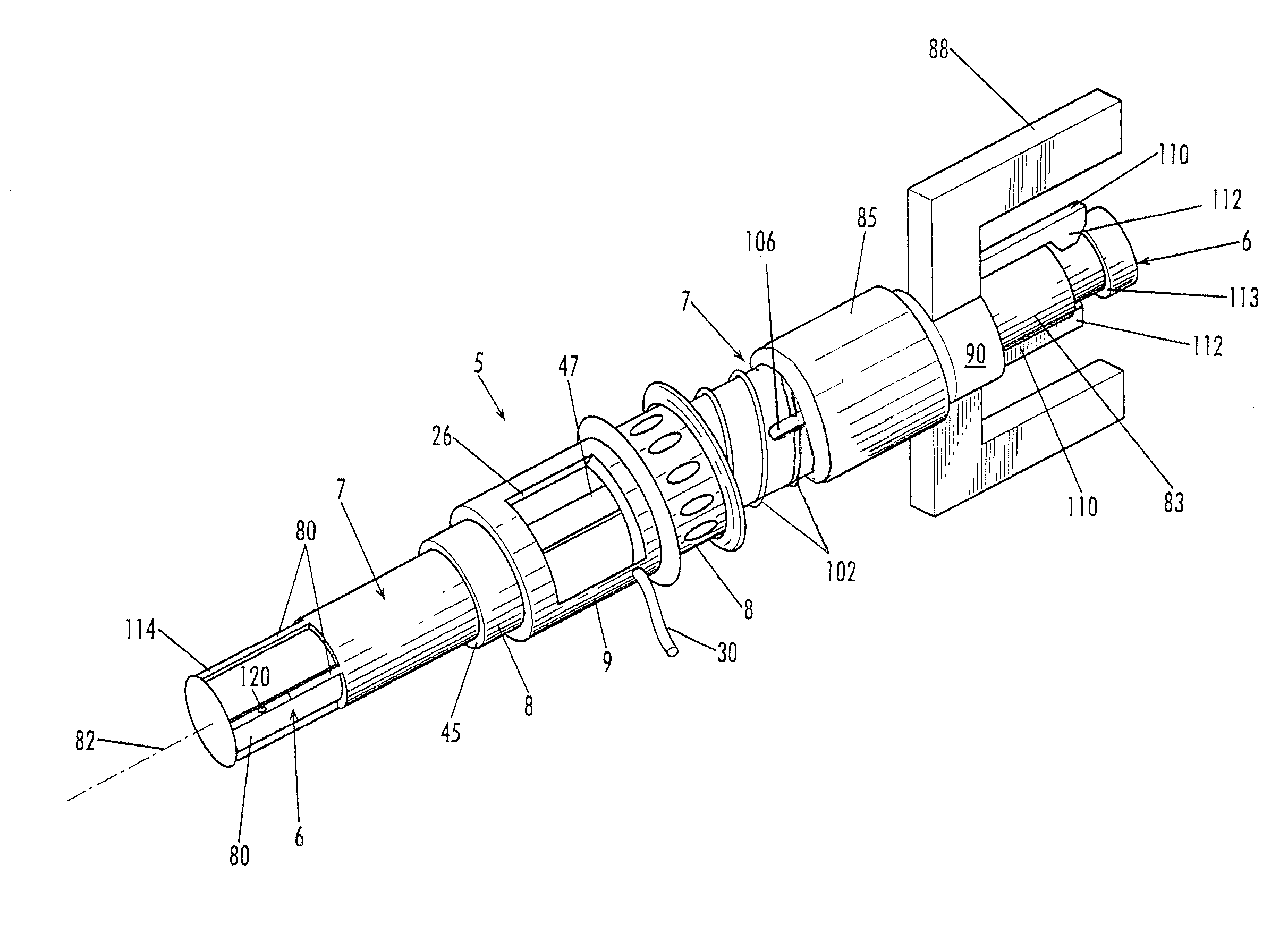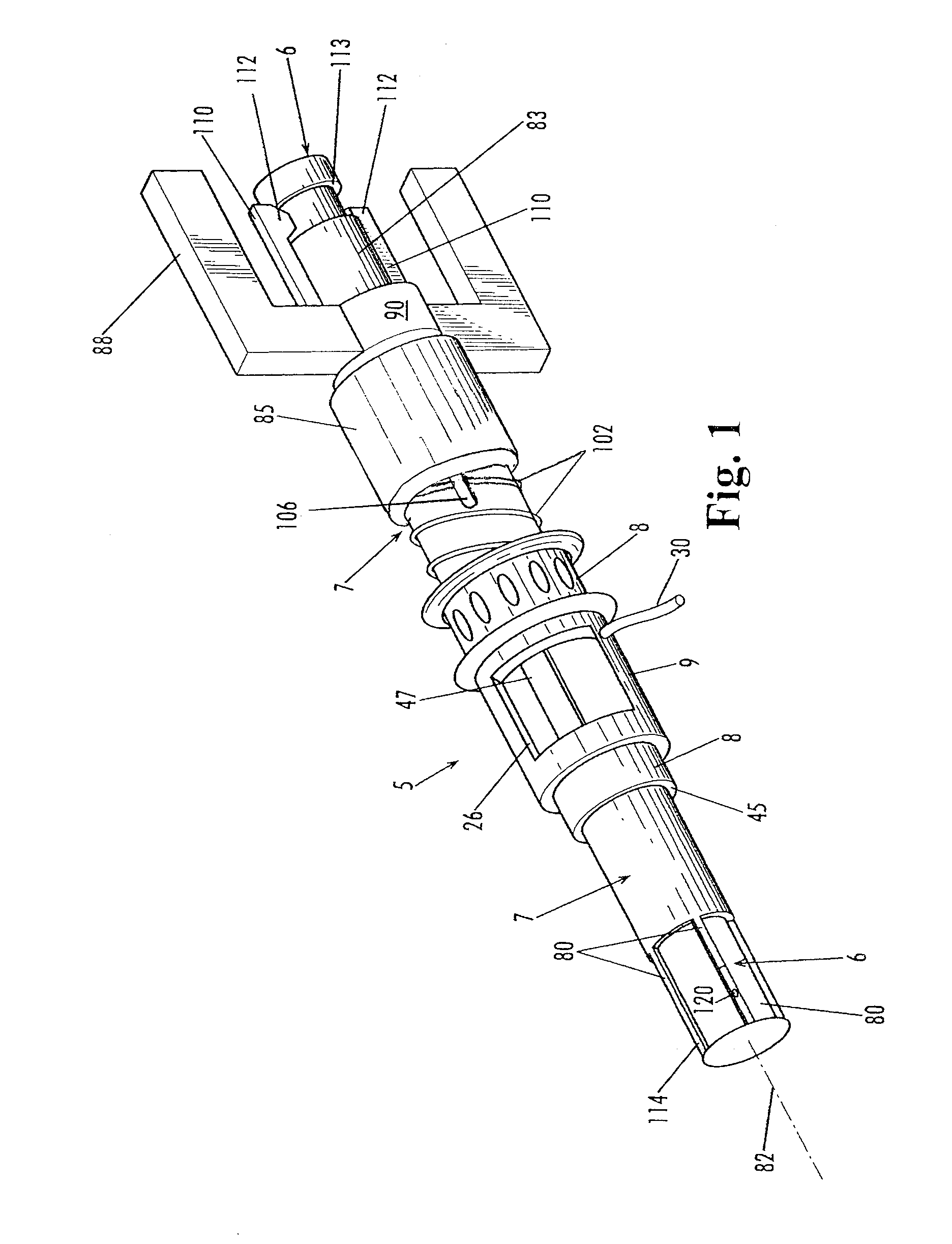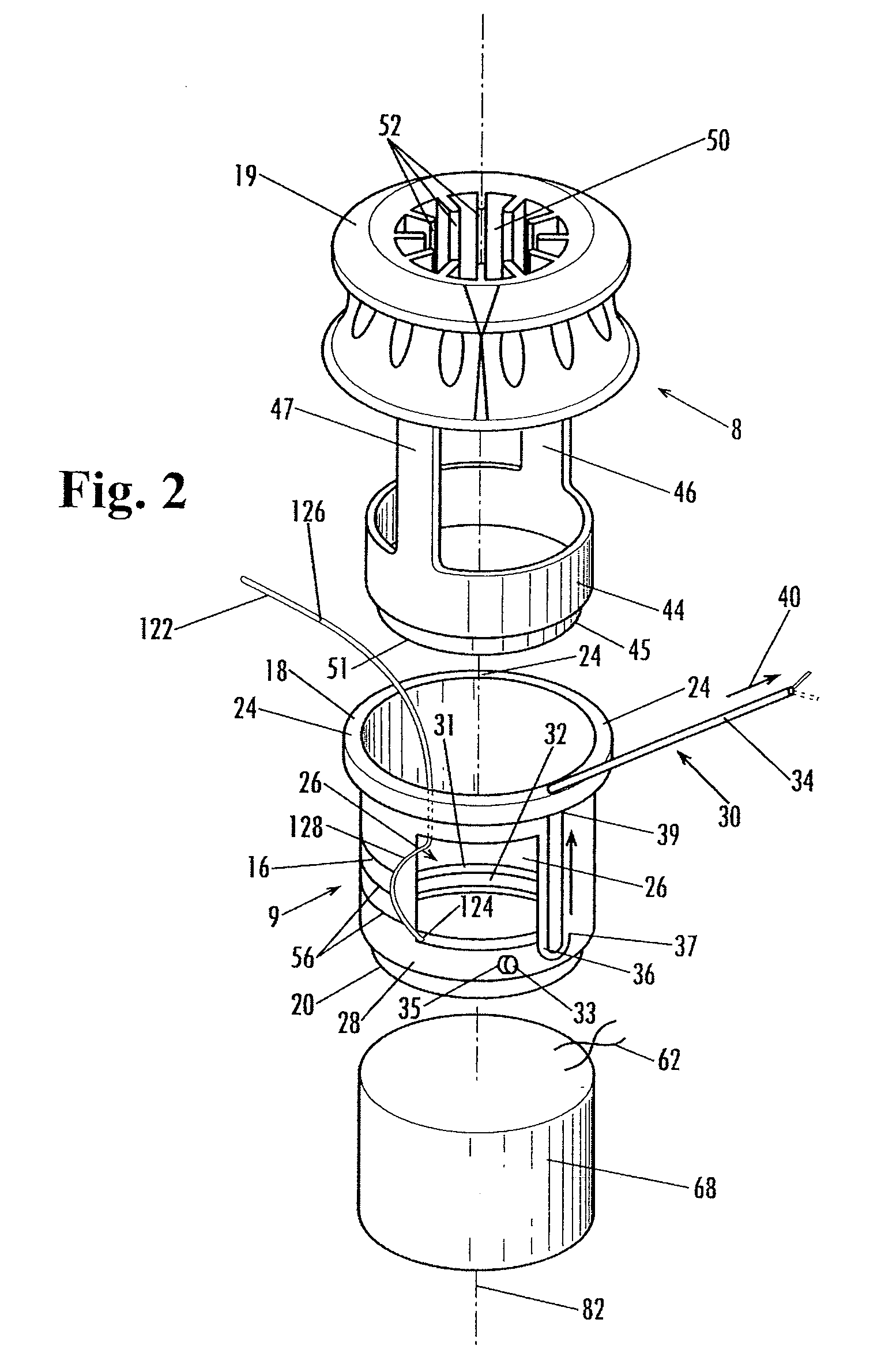Surgical Instrument for Detecting, Isolating and Excising Tumors
a surgical instrument and tumor technology, applied in the field of cutting surgical instruments, can solve the problems of physical ordeal for patients, increased risk of bleeding and infection, and compromise of cosmetic outcome of procedures, and achieve the effect of accurately positioning the device in alignment with the tumor
- Summary
- Abstract
- Description
- Claims
- Application Information
AI Technical Summary
Benefits of technology
Problems solved by technology
Method used
Image
Examples
Embodiment Construction
[0031]Referring now in more detail to FIG. 1, the assembled surgical instrument 5 includes an elongated detection probe such as an ultra sound instrument 6, a tubular carrier 7, a cutter 8 and a cannula 9. The tubular carrier 7, cutter 8 and cannula 9 may all be open ended and fit telescopically with respect to one another and telescopically about the detection probe 6, with the detection probe on the inside, the tubular carrier 7 next, the cutter 8 next, and the cannula 9 on the outside. The tubular carrier 7 is elongated and has an inner wall surface that telescopically fits about the detection probe so that the tubular carrier and the detection probe may be moved with respect to each other. Likewise, the cutter 8 and cannula 9 are shaped and dimensioned to be movable with respect to each other and movable about the tubular carrier.
[0032]As shown in FIGS. 2 and 3, the cannula 9 includes a cylindrical sidewall 16, a proximal end 18, and a distal end 20. The proximal end 18 includes...
PUM
 Login to View More
Login to View More Abstract
Description
Claims
Application Information
 Login to View More
Login to View More - R&D
- Intellectual Property
- Life Sciences
- Materials
- Tech Scout
- Unparalleled Data Quality
- Higher Quality Content
- 60% Fewer Hallucinations
Browse by: Latest US Patents, China's latest patents, Technical Efficacy Thesaurus, Application Domain, Technology Topic, Popular Technical Reports.
© 2025 PatSnap. All rights reserved.Legal|Privacy policy|Modern Slavery Act Transparency Statement|Sitemap|About US| Contact US: help@patsnap.com



